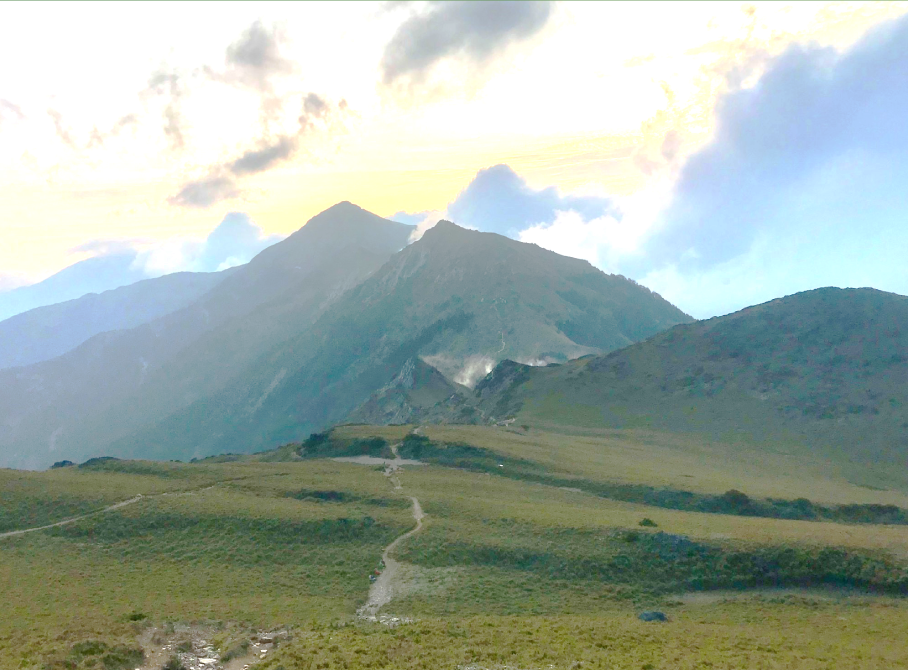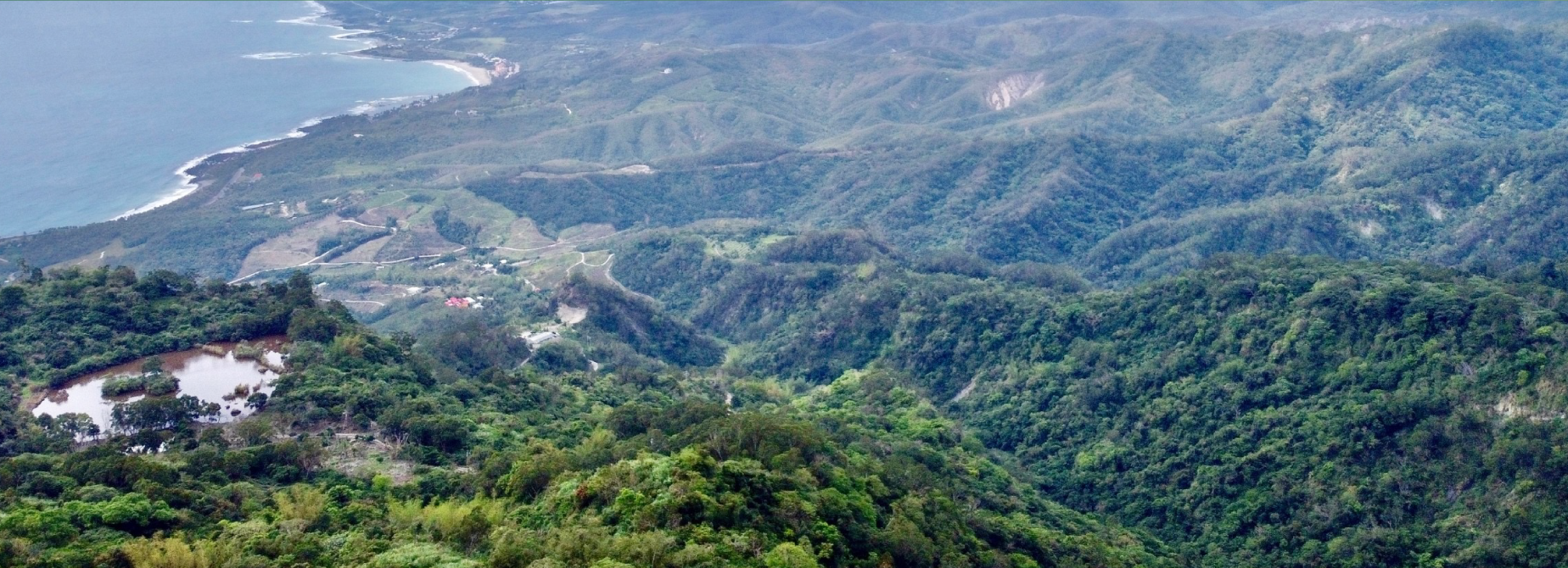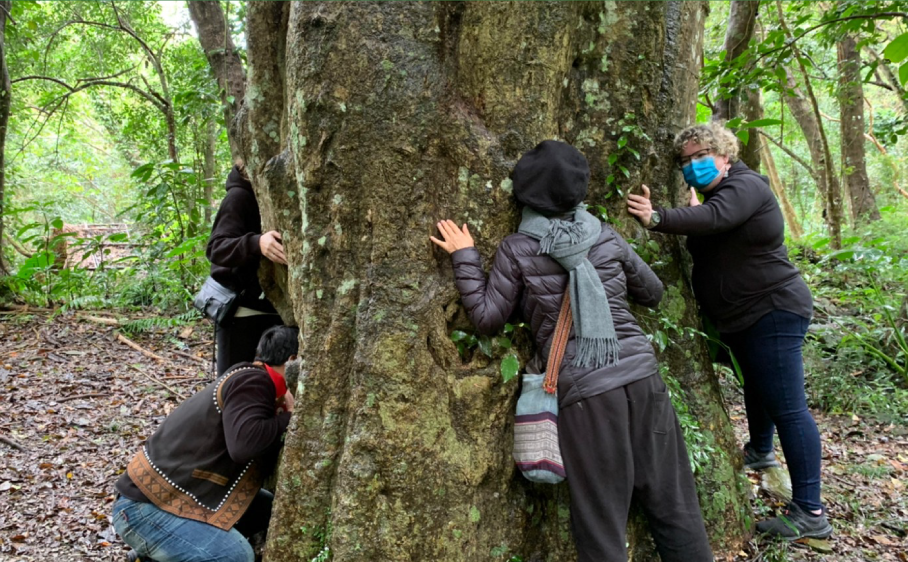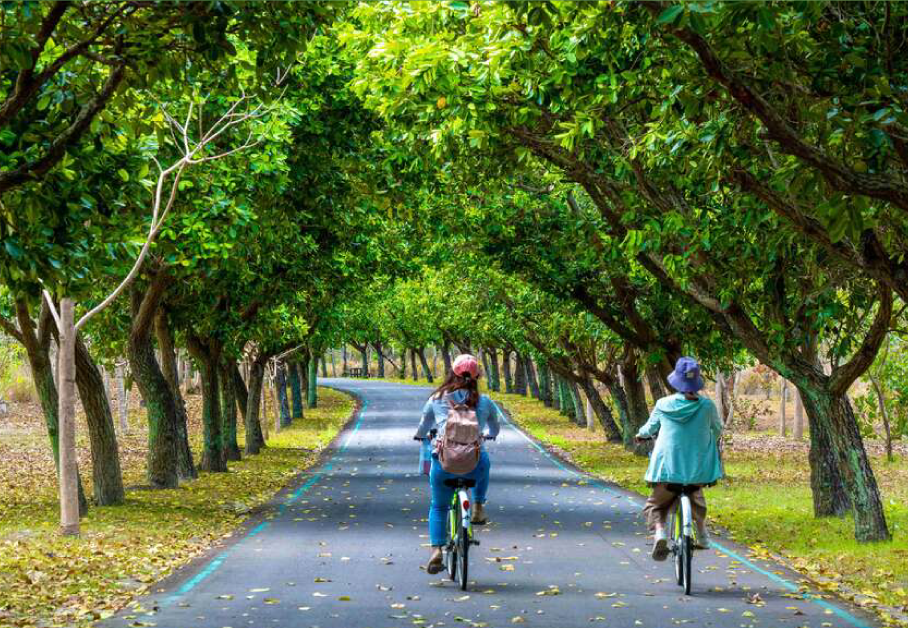 |
| Sylvan Delights |
|
This year, we aim to present Taitung to the reader using a new, geo-thematic approach. We will explore the interplay between Taitung’s unique geographical features, environment and climate on the one hand, and the culture, economy and lifestyle of its inhabitants on the other. In doing so, we hope to impress upon the reader a deepened appreciation and heightened curiosity for our county. The first issue of Taitung Times in 2024 dealt with Taitung’s plains, this present issue concerns itself with Taitung’s forests, and then we will successively cover Taitung’s rivers, islands and coasts, before finishing the year with a special edition dedicated to “spatial sacrality” in the county. PRIMEVAL WOMB
 On top of having birthed our species’ most distant ancestors, forests have acted since the dawn of time as humanity’s treasure trove, not only in a materialistic sense – as a “fridge” where one could find all sorts of “treats” unavailable elsewhere (mushrooms, game, etc.) or again as a “dispensary” (medicinal herbs) – but also as a source of inspiration for much of our spirituality, rituals and legends. This, of course, is no different in Taitung. TAITUNG’S FORESTS

In Taitung, woodlands are virtually synonymous with mountains. The narrow plains are dedicated to habitation and agriculture, while the lush greenery that inspired Portuguese explorers to call this island Formosa covers the towering peaks like a giant blanket of moss, in stark visual contrast with the azure waters that wash up on Taitung's 176 km coastline. This fact is quickly proven by satellite imagery, revealing two dark green strips cutting the county from North North-East to South-South West: the narrow Coast Mountains or Hai’an Range (HAR) by the coast, and the formidable Central Mountain Range (CMR) to the left, separated by the East Rift Valley. Thus, Taitung's two main wooded territories are the HAR shared with Hualien County, and the CMR shared with the rest of Taiwan. A COUNTY OF “TREE HUGGERS”
 Taitung’s forests thriving wildlife and lush vegetation no doubt played a great role in shaping the animism ubiquitous among indigenous cultures, where every object believed to be “animated” with a soul or spirit. This animistic worldview assumes a symbiotic relationship between us and Nature, humans are seen as an indivisible part of the natural world. Being one with nature does not entail, however, that people are “reduced” to a “subhuman” or “lesser” animal condition. On the contrary, animism elevates animals, plants and objects to a “human” level, i.e., personifies them and confers them a will, moral values and often a distinct personality. Just like real people, these personified beings have egos and can harbor grudges, as in the following Bunun legend: Once upon a time, red pine trees used to enter peoples’ houses of their own accord, to make it easier for humans to collect firewood. After being faced with peoples’ ingratitude for their kindness, the proud trees decided to move to the steepest slopes of the tallest mountains. From then on, tribespeople could only gather firewood at the expense of sore legs and much effort. Dong Jingsheng et al., 'Wander Lamuan – The Ethnobotany of Bunun in Formosan Central Ridge', 2008, published by the Forestry Bureau, Council of Agriculture, Executive Yuan. One must not be fooled by the story’s naïve charm. This cautionary tale actually reflects a society much wiser than our “late-capitalist” one. Its message is relevant even today: if we take nature for granted, Nature will punish us by making our lives harder. The relationship between Humanity and Nature, like any relationship, requires effort from both sides. Nature provides its children with the resources for sustaining life. All Nature asks in return is that we do not succumb to our greed. The successive waves of immigration that swept Taitung have not replaced the traditional respect of nature. Animism might have receded into the background somewhat, but it still influences how all of Taitung County’s residents coexist with their beautiful surroundings. Indigenous people have therefore always been aware that their survival depended on maintaining harmony with the ecosystem, often represented by a tree or a forest. Capitalism tends to view Nature only in economic terms: forests are a “resource”, trees a “commodity”. Recent trends among economists to place more and more importance on “externalities”, can be viewed as our society’s gradual realization of what Taitung’s indigenous people always knew - that Nature is generous only to the grateful. TREASURE TROVE

The forests/mountains of Taitung acted as “treasure troves” for the indigenous people, a bit like a mega-mall where one could find everything one needed. Indeed, they acted as the tribes’ pharmacy, supermarket, “Uniqlo” and even as an “Ikea”. Just like industrial societies, Taitung’s indigenous communities used the forest to produce all sorts of goods. Paper mulberry bark was used to make “barkcloth”, a cultural trait shared also by many Austronesians across the Pacific, where the fabric is known as Tapa. The fibers of the ramie plant were turned into all sorts of textiles. Houses were typically made out of wood that was also sculpted into totem poles and deity effigies. The main difference is that the indigenous never just “took” the forest’s resources. They viewed forests as a living ecosystem to which they themselves belong to and where each being, no matter how insignificant, had its role to play. To help maintain the relationship with the forest, a series of rituals and ceremonies were developed, the purpose of which was both social and ecological. For instance, every year, Taitung’s Bunun people hold the “Ear-Shooting Festival”, a coming-of-age-slash-hunting-festival. Before the festival, Bunun men venture into the forest to hunt the elusive deer. The slain deer's ear is then nailed to an altar, and village boys must pierce it with arrows, proving their marksmanship and manhood. For instance, every year, Taitung’s Bunun people hold the “Ear-Shooting Festival”, a coming-of-age-slash-hunting-festival. Before the festival, Bunun men venture into the forest to hunt the elusive deer. The slain deer's ear is then nailed to an altar, and village boys must pierce it with arrows, proving their marksmanship and manhood. The social role this festival plays is obvious. Less so, is the fact that ceremonies such as these are opportunities for the indigenous communities to “gather feedback” from the state of the ecosystem upon which they rely. How is the forest this year? Are the animal populations stable? Are the trees healthy or are they plagued by pests? These rituals not only allow the elder generation to pass on to the youth “hard skills” such as marksmanship and spoor tracking, but also to press on them their roles as stakeholders in the natural equilibrium. FRESH ARRIVALS
 Besides mountain forests, there actually are some small patches of “flatwoods” scattered across the county. One of them is particularly noteworthy, as it is an almost compulsory stop for travelers visiting Taitung City: the Taitung Forest Park. Sandwiched between the delta of the mighty Beinan River to the north and Taitung City to the south, the Taitung Forest Park is lovingly known by locals as “the Black Forest”, due to its many dark beefwood trees. Unlike its eponym, though, Taitung’s Forest Park covers just 280 or so hectares, and acts variously as a green “lung” for the city, as an entertainment venue, as a hiking and cycling paradise, as the arena of the first stage of the world-famous Challenge Taiwan Ironman, and, of course as a home to a multitude of animals and plants of all shapes and sizes. Despite its diminutive size, the Taitung Forest Park exemplifies both the economic (as a tourist attraction), cultural (concert venue, local landmark) and environmental (natural habitat, “green lung”) importance of forests, but also the Taitung Government’s proactive and nurturing role in regard to woodlands and wildlife conservation in general. GREEN CHAMPION

Taitung County proudly leads Taiwan in two vital metrics: the first is air quality, where Taitung consistently displays the lowest presence of pollutants such as PM 2.5; the second is forest coverage. A whopping 81.64 % of Taitung County is covered with woods. East Coast teammates Hualian and Yilan follow in second and third place, at 80.54 % and 78.55 % respectively. It does not take a tantalizing genius to see a correlation between the two statistics: greater forest coverage more or less directly translates into cleaner air and a healthier environment. Of course, there are other interlinked factors to be taken into account, namely population density and the intensity of industrial and agricultural activity. Granted, the fact that Taitung enjoys the lowest population density nationwide, along with being spared by heavy industry, gives it no small advantage when it comes to fresh air. Population density and economic activity, however, do not necessarily spell environmental doom. The Netherlands, for instance, houses almost the same population as Taiwan in a territory only slightly larger, produces roughly 50% more GDP, and is anything but an industrial wasteland. It is with this in mind that County Magistrate April Yao formulated her vision for a “Taitung Slow Economy”, a blueprint for sustainable economic growth in line with UN SDGs and in keeping with Taitung’s ageless indigenous wisdom. In conclusion, Taitung's lush forests form a stunning backdrop, attracting travelers and revitalizing the air. Their verdant abundance provides endless delights for residents. Recognizing forests as key to sustainable tourism, green growth, history, and culture, the County Government aims to protect these ecosystems crucial for alleviating human-caused damage in the Anthropocene. As heir to much of Taiwan's forests, Taitung County is fully invested in safeguarding these treasure troves. Splitting Taitung County’s lofty peaks is a vast, aquiferous network formed by countless streams, merging into larger rivers as they leap towards the ocean. On the one hand, they supply Taitung’s inhabitants with precious freshwater, on the other, following typhoons and heavy rain, they can turn into vengeful demons that leave untold destruction in their wake. In the next issue of Taitung Times, we will see how local people as well as the county government have learnt to coexist with these mercurial watercourses.
|
| © TAITUNG COUNTY GOVERNMENT 2024 |




